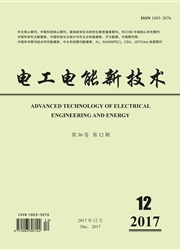

 中文摘要:
中文摘要:
阻抗源拓扑结构由于其独特的升降压功能得到越来越多的关注,目前已经应用于直交、交直以及相位频率均变化的交交电路中。阻抗源变流器可以分为电流型和电压型两大类,电流型和电压型相比,具有动态响应快、限流能力强、直流回路阻抗较大和输入电压较高等优点。本文对阻抗源电流型变流器进行详细分析,介绍阻抗源电流型变流器的发展历史和研究现状,研究有代表性的阻抗源电流型拓扑结构的工作原理及其优点和应用场合,并对其未来的发展进行展望。
 英文摘要:
英文摘要:
Due to its unique boost and buck function, impedance source topology is getting more and more attention and has been applied in electric power conversion circuit. Various converter topologies have been reported in the literature to overcome the limitations and problems of the traditional converter topologies. Proper implementation of the impedance-source network with appropriate switching configurations and topologies reduces the number of power conversion stages in the power system, which may improve the reliability and performance of the power system. The impedance source converter can be generally classified into voltage-fed and current-fed types. Compared to the volt- age-fed type, current source converter has the advantages of faster dynamic response, stronger current limiting ca- pability, bigger dc circuit impedance, and higher input voltage. This paper provides a comprehensive review of the various impedance-source-networks-based current-fed power converters, summarizes the development history and current research status of impedance source current fed converter, and analyzes the topology and its advantages of the representative impedance source current source inverter and gives an outlook of its future development.
 同期刊论文项目
同期刊论文项目
 同项目期刊论文
同项目期刊论文
 期刊信息
期刊信息
